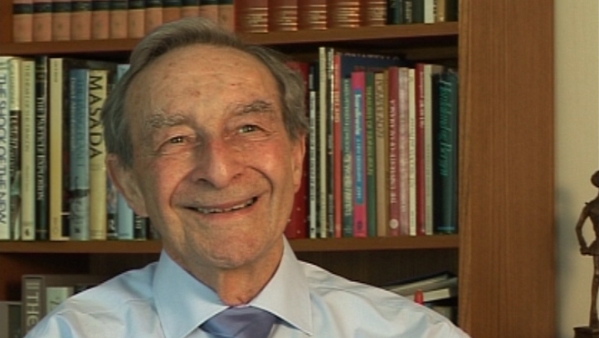NEXT STORY

Tougher work on ruthenium
RELATED STORIES

NEXT STORY

Tougher work on ruthenium
RELATED STORIES



So Mössbauer spectroscopy was well established, and Terry and I had written a book on it, we’d become well known throughout the world, and that had two effects: the first was in coming down to Leeds I was able to build up a dedicated large laboratory space with many Mössbauer spectrometers and good access to liquid helium. On the other hand, it meant that, because of our growing reputation, people were coming from all over the world, with their own money, to work in the group both as post-doctoral fellows, if they’d won a scholarship from their own country, or from visiting members of staff, people came on sabbatical leave, and so forth.
So that work went very well, and I suppose the main thing from the point of view of our discussion now is that we picked compounds clearly that could be solved in iron chemistry and tin – tin 119 was a moderately easy isotope – but I thought we should also try some of the more difficult ones, that is to say, more difficult technically from the Mössbauer effect.
Norman Greenwood (1925-2012) was born in Australia and graduated from Melbourne University before going to Cambridge. His wide-ranging research in inorganic and structural chemistry made major advances in the chemistry of boron hydrides and other main-group element compounds. He also pioneered the application of Mössbauer spectroscopy to problems in chemistry. He was a prolific writer and inspirational lecturer on chemical and educational themes, and held numerous visiting professorships throughout the world.
Title: Precursors to further work at Leeds
Listeners: Brian Johnson
Professor Brian FG Johnson FRS, FRSE, FRS Chem, FAcad Eu, FAS. Professor of Inorganic Chemistry University of Edinburgh 1991-1995, Professor of Inorganic Chemistry University of Cambridge 1995-2005, Master Fitzwilliam College Cambridge 1999-2005. Research interests include studies of transition metal carbonyls, organometallic chemistry, nano- particles and homogeneous catalysis. Professor Johnson is the author of over 1000 research articles and papers.
Tags: Mössbauer spectroscopy, Leeds University, Terry Gibb
Duration: 1 minute, 25 seconds
Date story recorded: May 2011
Date story went live: 25 November 2011